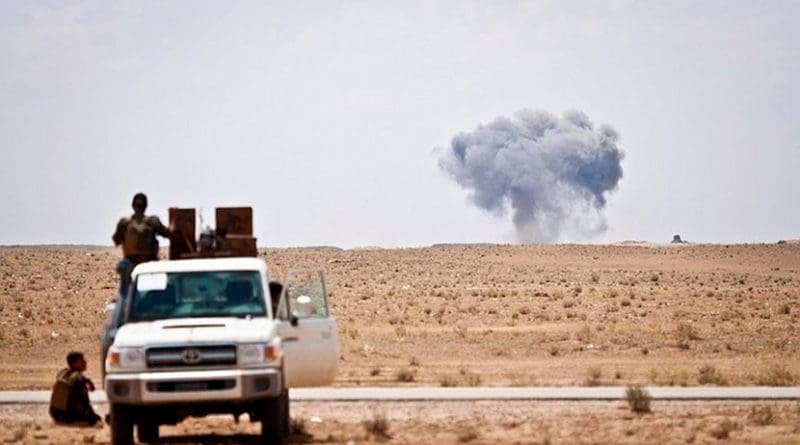Syrian War Study Yields New Predictive Model For Attrition Dynamics In Multilateral War
Three researchers have conducted a study of war, specifically the current conflict in Syria that’s been raging since 2011, to arrive at the creation of a new predictive model for multilateral war, which is called the Lanchester multiduel.
The research, published in the August edition of the INFORMS journal Operations Research, is titled “The Attrition Dynamics of Multilateral War,” and is authored by Moshe Kress and Kyle Lin of the Naval Postgraduate School in Monterey, California, and Niall MacKay of the University of York in the United Kingdom.
The researchers found that by studying the conflict in Syria using existing attrition models, certain factors were lacking that required the creation of a new model.
Legacy combat models focus on scenarios where only two players battle to defeat the other. In those models it is assumed that 100 percent of the effort is focused on defeating one other opponent. In this new predictive model, scenarios are considered where three or more players are engaged.
In the new Lanchester multiduel model, each player’s objective is to maximize its surviving number after defeating all others–if it can achieve a victory–or minimize the eventual victor’s surviving number. In creating this new attrition model, the researchers have shown that unless there exists a player so strong that it can guarantee to win regardless of what the others do, the outcome is a gradual stalemate that culminates in mutual annihilation of all players.
“This new predictive model takes into consideration that there can be three or more players, a truel, which stands in contrast to a range of results for sequential-engagement scenarios,” said Niall MacKay.
The researchers used the war in Syria since 2011 as the “motivating example” of their model because it offered a different paradigm than typical two-side, force-on-force engagements. Several players – the Assad regime and its Iranian and Hezboulla affiliates, Free Syrian Army, Kurdish militia, ISIS, and Jabhat al-Nusra – all have been fighting for dominance over territory and population.
“Based on our study of this conflict and our new multiduel attrition model, we cautiously speculate that absent an overall agreement among the various players, the war in Syria will prolong toward mutual annihilation,” said Moshe Kress. “The one thing that can change this prolonged stalemate is if a significant and largely invulnerable external force, such as Russia, intervenes to make one player dominant.”
“We say one player is dominant if it can defeat the alliance of all other players,” added Kyle Lin. “In other words, a dominant player can guarantee a win regardless of what the other players do. A player is pseudodominant if it can guarantee a tie for itself, where no others can win, regardless of what they do.”


Apart from Syrian War, what other war conflicts may fall into similar consideration? How do you think?